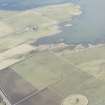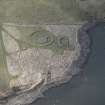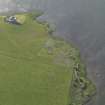Following the launch of trove.scot in February 2025 we are now planning the retiral of some of our webservices. Canmore will be switched off on 24th June 2025. Information about the closure can be found on the HES website: Retiral of HES web services | Historic Environment Scotland
Barnhouse
Settlement (Period Unassigned), Axehead(S) (Stone)(Period Unassigned), Mace (Period Unassigned), Unidentified Flint(S) (Flint)(Period Unassigned)
Site Name Barnhouse
Classification Settlement (Period Unassigned), Axehead(S) (Stone)(Period Unassigned), Mace (Period Unassigned), Unidentified Flint(S) (Flint)(Period Unassigned)
Alternative Name(s) Bridge Of Brodgar
Canmore ID 2151
Site Number HY31SW 61
NGR HY 3076 1270
Datum OSGB36 - NGR
Permalink http://canmore.org.uk/site/2151
- Council Orkney Islands
- Parish Stenness
- Former Region Orkney Islands Area
- Former District Orkney
- Former County Orkney
HY31SW 61 3766 1270
See also HY31SW 11, HY31SW 12, HY31SW 62.
For comparable settlements at Skara Brae (Mainland), Rinyo (Rousay) and Pool (Sanday), see HY21NW 12.00, HY43SW 20 and HY63NW 17 respectively.
'The first season of major excavation commenced this spring after trial excavation had revealed the remains of a large, late Neolithic settlement, being severly damaged through annual ploughing. Four structures have been recognised in a confined area of investigation, being part of a larger settlement complex lying adjacent to the Loch of Harray. Large amounts of grooved ware, flint and bone have be en recovered, together with stone axes, skail knives and a macehead. An important discovery is that of worked pitchstone, being the first examples from Orkney. A final season of excavation is planned for the coming spring.'
C Richards 1986.
'A second season of excavation revealed ten stone constructed houses situated on the NE tip of the Stenness promontory overlooking the Loch of Harray. The settlement complex covers an area approximately 60m by 80m. The structural preservation is variable across the site with houses constructed adjacent to the loch being protected by the formation of a positive lynchet, as opposed to badly eroded examples lying further into the cultivated area.
Three main phases of construction have been discovered. First, the erection of a large oval building, approximately 14m by 11m, having a side entrance and external casing wall. The internal arrangement consisted of six rectangular recesses set into the inner wall and a hearth situated to the right of the entrance. A cist, with cover slab, was located in a central position directly in line with the entrance. Second, at least five smaller houses were constructed around the large structure, all of which conform to the traditional design of a single outer wall, two opposed internal recesses and end dresser.
The final phase is represented by a house erected on existing occupation deposits, having a single outer wall built on a clay foundation. Internal stone furniture is constructed through the later technique of upright stone slabs.
Throughout the entire settlement a complex series of ditches and drains have been uncovered. Large quantities of Grooved Ware pottery, worked flint and stone artifacts have been recovered. A final season of excavation will be undertaken in 1988.'
C Richards 1987.
Orkney Smr Note (1989)
Located in December 1984 as a surface scatter of flint and burnt bone, subsequent trial excavation, funded by the Society of Antiquaries of Scotland, established the presence of a substantial Grooved Ware settlement which was rapidly being destroyed by annual ploughing. Three seasons of excavation from 1986-8, undertaken on behalf of HBM, have revealed a large settlement complex, significantly different in construction from other Neolithic settlements in Orkney, as typified by Skara Brae. From the earliest phase of occupation, the site was hierarchically organised with a large house-structure, (No 2) being surrounded by at least 6 smaller, Skara Brae-Rinyo phase-1 type houses. This situation was maintained throughout the discernible life of the settlement with, at a later stage, the larger House 2 being internally remodelled. The smaller surrounding houses were rebuilt and a general expansion in settlement is demonstrated through the construction of at least an additional 7 houses.
During the 1988 season of excavation an outer trial trench, placed slightly S of the main settlement, revealed a massive cavity wall, 3m thick, enclosing a clay floored structure of square shape with rounded corners. Internally this building was approximately 7m across. This was subsequently overshadowed by the discovery that the whole building was enclosed by a large outer wall, 1.5m thick and 26m in diameter, which enclosed a large clay and stone platform-courtyard area around the inner structure.
Structure 8
The main questions guiding the 1989 strategy concerned the nature of this unique structure, in particular its function and relationship to both the main settlement and surrounding monumental landscape.
Initially two main problems had to be resolved. First, the entrance had to be located. Second, the outer wall and clay platform required examination.
Excavations in the northwestern area revealed that all walls and much of the clay floor of the building, and of the surrounding platform, had been removed by ploughing. However, as the area was investigated both the soil-filled stone impressions of the wall and, importantly, a 'monumental' entrance way to the inner building were discernible in the form of a series of large stone holes and slots of substantial depth cutting down into the natural till. Two long slots with the remains of packing stones indicated where single uprights had lined either side of the 0.8m wide entrance passage as it ran through the 3m thick wall. Two large upright stones set into the outer wall face had expanded the entrance to a 2m width. Two large standing stones, one snapped in situ, positioned away from the outer wall had flanked the entranceway, and two smaller uprights had further extended the entrance out into the platform area.
Although at present the clay platform is only partially excavated the location of a number of hearths and associated stone boxes, pits and occupation material on the southeast portion of the platform behind the inner structure effectively demonstrated this to be a courtyard as opposed to truncated mound makeup. Moreover, this arrangement of features may imply large scale cooking activities, apparently undertaken out of view of people entering the structure.
The organisation of the inner structure had, at least superficially, many features in common with a house. The yellow clay floor had a semi-rectangular cut at the rear, corresponding with a 'dresser', and in the centre a large disturbed square-shaped area with a ploughsoil filled stone slot to the E, enclosing red burnt material, suggested a destroyed hearth. A complete Grooved Ware vessel was discovered adjacent to the eastern wall and a stone lined drain ran internally along the rear wall and out through the SE corner across the clay platform and under the enclosing wall into a large external ditch.
Although, only partly excavated, an examination of the interior floor revealed the central feature itself to be a combination of elements ending with an upright stone of indeterminate height, flanking a temporary hearth. The temporary hearth had been created by placing small stone slabs vertically against stone blocks filling an earlier 'L' shaped cut into the underlying natural. This cut, stratigraphically below the 6cm thick clay floor, must represent an earlier upright stone arrangement, standing before Structure 8 was built. Three flakes of Arran pitchstone were located on the old land surface associated with this earlier standing stone arrangement.
The complete excavation of the internal drain running out into ditch showed a general silting to have occurred. Within these silts a small ceramic vessel 3.5cm diameter and 2cm depth was found. The drain was revealed to have been maintained over a substantial period of time involving platform re-surfacing and modification. Investigation of the ditch showed it to run from Structure 8, as opposed to being a possible settlement enclosure ditch. A large amount of stone collapse from the outer wall of Structure 8 survived in its upper fill.
The 1989 excavations successfully resolved the questions posed and, importantly Structure 8 may now be compared directly with the closely situated Stones of Stenness henge monuments (Ritchie 1976) which displays remarkable similarities. The underlying aim of the whole project involved the integration of the settlement complex into the wider monumental landscape and to aid its overall interpretation. The conclusion of the Barnhouse excavations in 1990 will, without doubt fulfil these expectations.
Sponsor: SDD HBM.
C Richards DES 1989.
Information from Orkney SMR, 1989
Publication Account (1996)
Only the lowest courses of these remarkable houses have survived, partly the result of centuries of ploughing and partly because they appear to have been deliberately demolished at the end of their useful life, but the excavated remains have been rebuilt and visitors are able to walk through them (see p.00). Despite the fact that only the base of each house can be seen, the similarity to the better preserved houses at Skara Brae is striking. There are the same central kerbed hearths, bed alcoves and dressers, and drains run from the settlement into the loch. Two of the houses are far more elaborate than those at Skara Brae, perhaps implying a social or ritual hierarchy. Barnhouse and the Stones of Stenness were in use at the same time, and the stone circle and henge may well have been built and serviced by the people living beside the loch. Only part of the settlement has been excavated, and it was clearly both substantial and long-lived.
Information from ‘Exploring Scotland’s Heritage: Orkney’, (1996).
Watching Brief (25 May 2009)
A watching brief was maintained to monitor the excavation of three small holes near Barnhouse Neolithic Settlement, Stenness, Orkney (HY 3079 1271). These holes were required for the installation of a new information board. Below the turf two distinct layers were seen. The uppermost of these layers contained a fragment of red flint while the lower produced a piece of modern china, suggesting that this part of the site had been disturbed relatively recently.
Information from Oasis (kirkdale1-249656) 23 August 2017








































